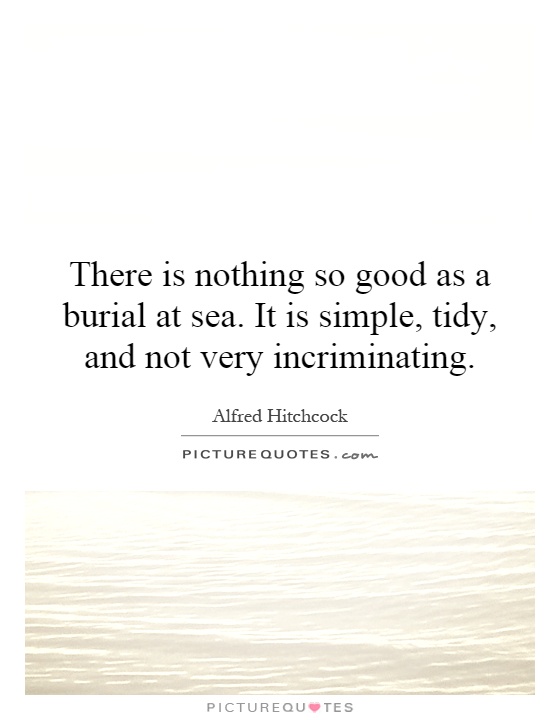There is nothing so good as a burial at sea. It is simple, tidy, and not very incriminating

There is nothing so good as a burial at sea. It is simple, tidy, and not very incriminating
Alfred Hitchcock, the master of suspense and psychological thrillers, was known for his dark and twisted view of the world. His films often explored themes of murder, deception, and the darker side of human nature. In many of his movies, death played a central role, and the idea of a burial at sea was a recurring motif.Hitchcock understood the power of the sea as a symbol of mystery and danger. The vast expanse of water, with its unpredictable currents and hidden depths, was the perfect setting for his characters to confront their fears and secrets. In Hitchcock's world, a burial at sea was not just a means of disposing of a body; it was a metaphor for the ultimate act of concealment and erasure.
"There is nothing so good as a burial at sea. It is simple, tidy, and not very incriminating," Hitchcock once said, and this sentiment is reflected in many of his films. In "Psycho," the iconic shower scene in which Marion Crane is brutally murdered by Norman Bates is followed by her body being wrapped in a shower curtain and dumped in a nearby swamp. The murky waters of the swamp serve as a makeshift grave, swallowing up Marion's remains and erasing all evidence of the crime.
Similarly, in "Vertigo," the character of Madeleine is seemingly drowned in the San Francisco Bay, only to reappear later as Judy, a woman who has been manipulated and transformed by the male protagonist. The sea becomes a symbol of rebirth and transformation, as well as a place of hidden truths and buried secrets.












 Friendship Quotes
Friendship Quotes Love Quotes
Love Quotes Life Quotes
Life Quotes Funny Quotes
Funny Quotes Motivational Quotes
Motivational Quotes Inspirational Quotes
Inspirational Quotes